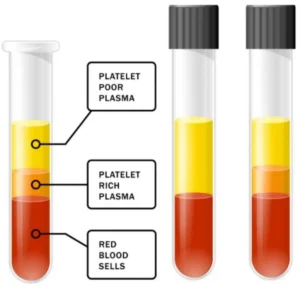Get a Quote
We will get in touch in 1 business day.
| Product Name | PRP Tube for Hair Treatment |
| Tube Material | PET/Glass/Crystal |
| OEM/ODM | Yes |
| Certificate | CE, ISO13485, ISO9001 |
| Usage | Hair Regeneration |
| Sterile | Irradiation sterilization |
| Sample | Free |
| Service | The groups we serve: distributors, import traders, government procurement, Buying Agents, medical chain stores, we provide one-stop procurement for you to simplify your procurement process |
PRP contains fibronectin. Fibronectin is a macromolecular glycoprotein that has a variety of biological activities. It can promote the adhesion growth of cells, and the adhesion of cells is a necessary condition for the maintenance of the body structure and the completion of cell growth. Biotin PRP is a biotin-enhanced platelet enrichment therapy used to treat hair loss and promote hair growth. The treatment involves injecting platelets rich in growth factors and proteins from the patient’s blood into the scalp to stimulate hair follicle growth and hair regeneration. The addition of biotin can enhance the secretion of the growth factor of platelets and the effect on hair growth. The treatment is safe, non-invasive has no side effects, and is suitable for men and women with hair loss of different ages.
1:Promotes Tissue Repair and Regeneration: PRP, rich in growth factors, can accelerate the tissue repair process, stimulate the generation of new cells, and aid in wound healing and tissue regeneration.
2:Reduces Inflammation and Pain: The growth factors and anti-inflammatory agents in PRP can effectively reduce inflammation and alleviate pain, especially in the treatment of arthritis and muscle injuries.
3:Improves Skin Quality: In the cosmetic field, PRP is used to improve skin texture and elasticity, reduce fine lines and wrinkles, and enhance skin radiance.
4:Promotes Hair Regrowth: PRP has shown good results in treating hair loss and promoting hair regrowth, stimulating hair follicles, and increasing hair density and growth rate.


Step1: First of all, prepare all the consumables we need in the process of operation, including anticoagulant collection vessels, rubber tubes, disinfectant, cotton swabs, syringes, syringes, long needles, 30G needle fungal gauze, etc.
Step 2: Blood was drawn. Peripheral blood was collected by the conventional blood drawing process, about 10ml, mixed upside down and fully mixed with the anticoagulant in the blood collection tube.
Step 3: For the first centrifugation, put the collecting vessel into a centrifuge, preferably a tilt centrifuge. After increasing the slope, the platelets cover a large area and are easy to extract. The first centrifugal speed was 2500pm. After centrifugation, the blood vessels were taken out. At this time, obvious stratification could be seen, with serum in the upper layer, platelets in the middle, and red blood cells in the lower layer.
Step 4: For the first centrifugation, put the collecting vessel into a centrifuge, preferably a tilt centrifuge. After increasing the slope, the platelets cover a large area and are easy to extract. The first centrifugal speed was 2500pm. After centrifugation, the blood vessels were taken out. At this time, obvious stratification could be seen, with serum in the upper layer, platelets in the middle, and red blood cells in the lower layer.
Step 5: Second centrifugation. The second collection vessel was centrifuged again at 3200RPM for 8min. After centrifugation, the collection vessel was taken out.
Step 6: The remaining approximately PRP is extracted with a 1ml syringe, and the whole extraction process is completed.
We are a factory with over 20+ years of experience.
30% T/T in advance, and balance against the documents.
Yes, all accepted.
Our capacity can be 500,000PCS per day.
Yes, Sinymedical has a dedicated customer support team. You can reach them through the contact information provided on their website.

Medical Consumables Manufacturer Established 2003. High-end equipment, professional team, first-class service Sinymedical helps you simplify the process from import to sale. Let your medical consumables become high-quality products.
Copyright © 2025 Sinymedical PRP Tube | All Rights Reserved
We will get in touch in 1 business day.